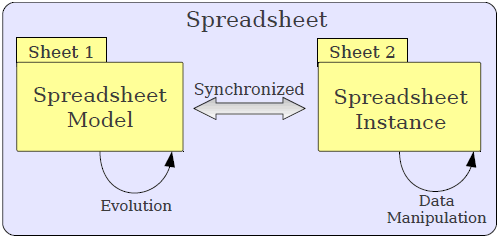Authors
Jorge Mendes
Abstract
The paper mentions that a spreadsheet business model is defined from which a customized spreadsheet application is generated guarantying the consistency of the spreadsheet with the underlying model.
This approach closes the gap between creating and using a domain specific language for spreadsheet models and a totally different framework for actually editing spreadsheet data. Instead, it unifies these operations within spreadsheets: in one sheet it defines the underlying model while another sheet holds the actual data, such that the model and the data are kept synchronized.
An important feature is that model evolution is available as a set of pre-defined operations. Also, any evolution in a spreadsheet model is automatically propagated to its spreadsheet instance (that contains the underlying data).
ClassSheets are a high-level, object-oriented formalism to specify the business logic of spreadsheets. They allow users to express business object structures within a spreadsheet using concepts from the Unified Modeling Language (UML).
Sample

The ClassSheet evolution steps automatically produce (backward and forward transformation) functions to map the spreadsheet instance so that it conforms to the evolved model.
Publication
2011, IEEE Symposium on Visual Languages and Human-Centric Computing, September, pages 235-236
